It is the end of February, and the start of the new trout season in Wales is just six days away. Focus from most of the fishing community is currently on the upcoming voluminous hatches of the March Brown (Rhithrogena germanica) and Grannom (Brachycentrus subnubilis), however, there is one invertebrate that has been active for quite a while, and one which (especially at this time of year) will be at the top of any dry fly angler’s list.
The Large Dark Olive (Baetis rhodani) hatches begin during the colder months of the year and, for me, is an invertebrate I watch out for very closely at this time of the year. Other than midge (which are in our waterways twelve months of the year), LDOs can be seen trickling off during warmer periods of winter days. At the start of the season, this is one of the main invertebrates I look to imitate.
Over the past few seasons, I’ve found myself fishing and tying with more regularity messier/noisier emerger patterns of CdC, Hare’s Mask, and Snowshoe Rabbit fur. They are just too good at imitating that critical stage of the life cycle where the invertebrate is held helpless in the surface film. As it attempts to scramble free, full of emerging legs and exploded carapace, to the trout, it looks like nothing other than a good, meaty morsel and protein-packed snack to be easily taken.
However, I’m a hackle tart at heart, and I love tying with rooster feathers. For the faster, more broken waters I fish at home, the paradun, both highly buoyant and visible, is a firm favourite, and at this time of year, when waters might be running a little higher than in summer, what is there that’s better?
Materials
- Hook: Tiemco TMC100, size 14
- Thread: Semperfli Nano Silk (18/0 / 30D), white
- Wing Post: Semperfli Poly-Yarn, cream
- Hackle: Whiting Farms Genetic Dry Fly, speckled badger
- Tails: Whiting Farms Coq de Leon (Tailing pack), dark pardo
- Abdomen: Semperfli Superfine Dubbing, dark brown
- Rib: Semperfli Classic Waxed Thread (12/0), yellow
- Thorax: Nature’s Spirit Snowshoe Rabbit Foot Dubbing, brown
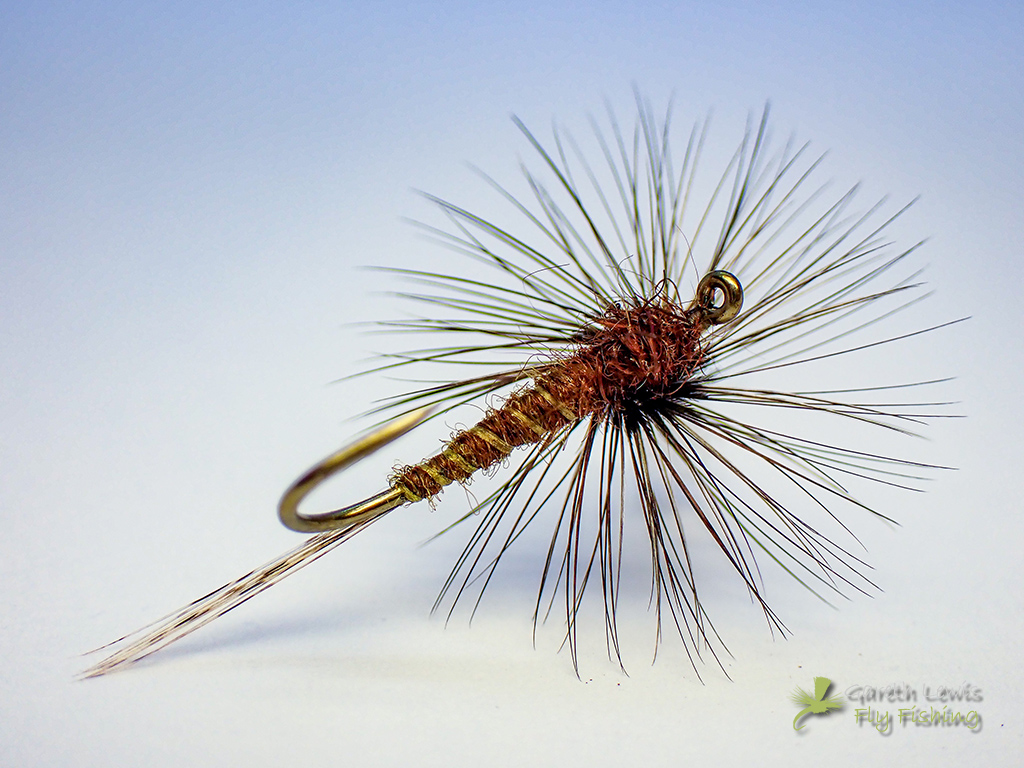
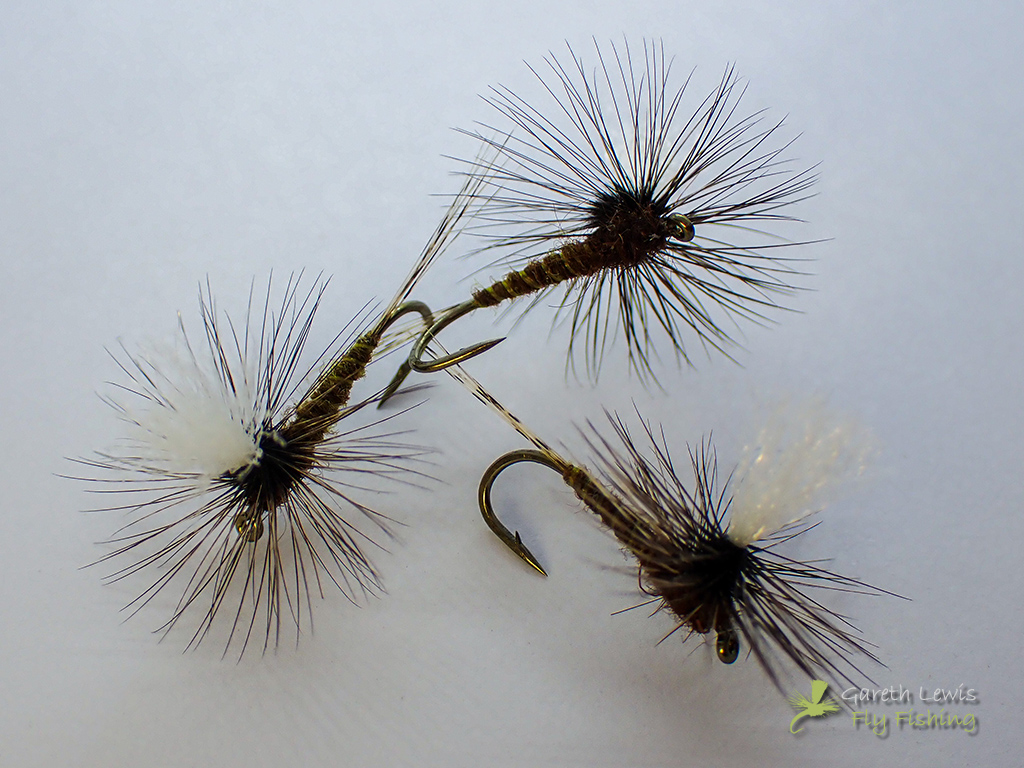

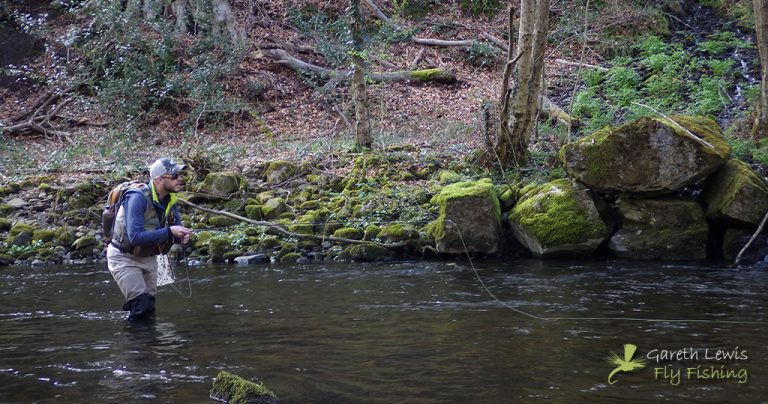
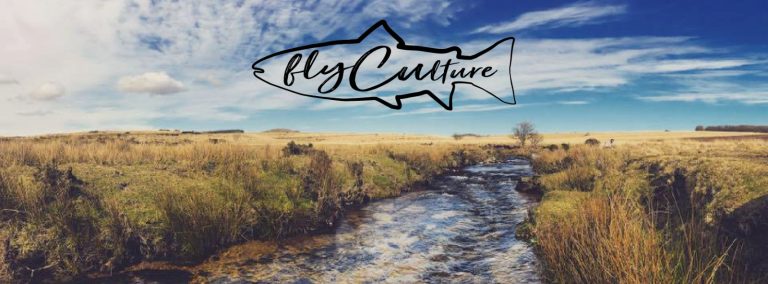
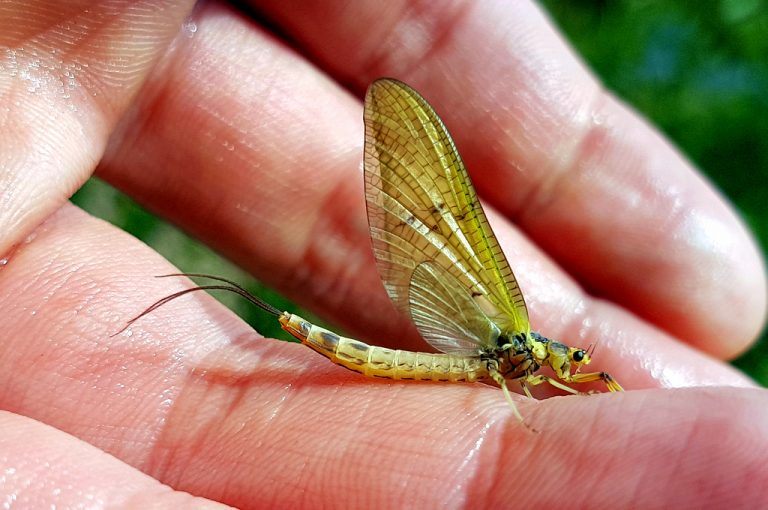
Stealing that Gareth, loving the contrast between the ribbing and abdomen.
Thanks Ben!
Been looking for some different LDO variants for March . Going to tie up a few of these for my northern Irish waters! Looks great ! If u don’t mind me asking what wedsite or company do u order your whiting hackles from ? And I guess u get a cape? I always keep an eye on ur wedsite to copy your top class trout patterns!
Hey Kells, I only tend to use Whiting, and specifically saddles (Pro or Bronze grade) where I’m tying a lot of the same size. That said, you’ll get similar feathers in a cape, of course, but not as many (there’ll be a good mix of larger and smaller-sized hackles, too). I usually use Lakeland in the UK, but I’ve not purchased for a while (I have too many as it is!) Have a look about, and if you can view the capes/saddles in person, even better. That said, Nigel at Lakeland will be able to help in advising what sizes the capes/saddles are best suited for. Well worth a chat with him 🙂
Thanks also for the kind words! There’ll be more patterns coming this year…and I’m hoping to revitalise my YouTube channel too.